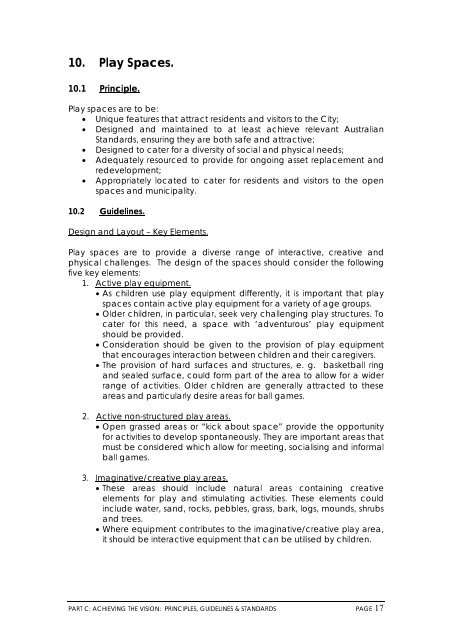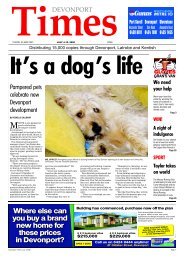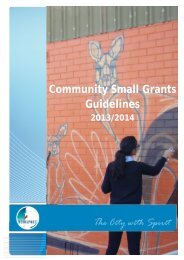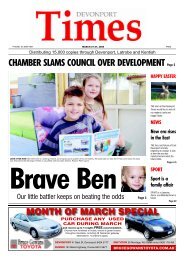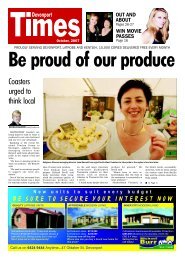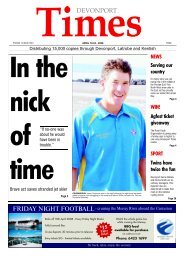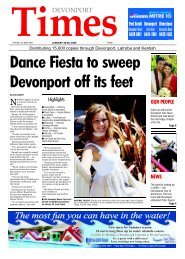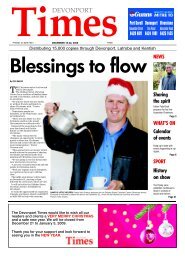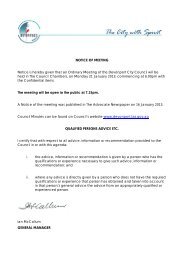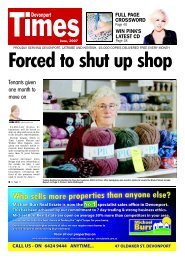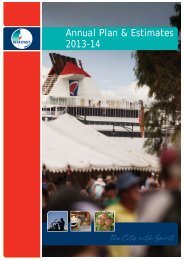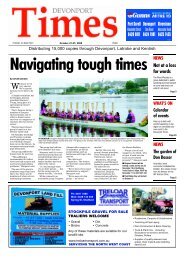Public Open Space Guidelines 2.17 Mb - Devonport City Council
Public Open Space Guidelines 2.17 Mb - Devonport City Council
Public Open Space Guidelines 2.17 Mb - Devonport City Council
Create successful ePaper yourself
Turn your PDF publications into a flip-book with our unique Google optimized e-Paper software.
10. Play <strong>Space</strong>s.10.1 Principle.Play spaces are to be:• Unique features that attract residents and visitors to the <strong>City</strong>;• Designed and maintained to at least achieve relevant AustralianStandards, ensuring they are both safe and attractive;• Designed to cater for a diversity of social and physical needs;• Adequately resourced to provide for ongoing asset replacement andredevelopment;• Appropriately located to cater for residents and visitors to the openspaces and municipality.10.2 <strong>Guidelines</strong>.Design and Layout – Key Elements.Play spaces are to provide a diverse range of interactive, creative andphysical challenges. The design of the spaces should consider the followingfive key elements:1. Active play equipment.• As children use play equipment differently, it is important that playspaces contain active play equipment for a variety of age groups.• Older children, in particular, seek very challenging play structures. Tocater for this need, a space with ‘adventurous’ play equipmentshould be provided.• Consideration should be given to the provision of play equipmentthat encourages interaction between children and their caregivers.• The provision of hard surfaces and structures, e. g. basketball ringand sealed surface, could form part of the area to allow for a widerrange of activities. Older children are generally attracted to theseareas and particularly desire areas for ball games.2. Active non-structured play areas.• <strong>Open</strong> grassed areas or “kick about space” provide the opportunityfor activities to develop spontaneously. They are important areas thatmust be considered which allow for meeting, socialising and informalball games.3. Imaginative/creative play areas.• These areas should include natural areas containing creativeelements for play and stimulating activities. These elements couldinclude water, sand, rocks, pebbles, grass, bark, logs, mounds, shrubsand trees.• Where equipment contributes to the imaginative/creative play area,it should be interactive equipment that can be utilised by children.PART C: ACHIEVING THE VISION: PRINCIPLES, GUIDELINES & STANDARDS PAGE 17


